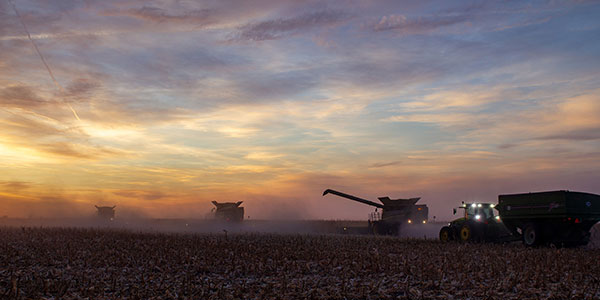AGRONOMICSUPPORT
YOU CAN TAKETO THE FIELD
Fertilizing for Big Yields Under Extreme Price Pressure
As harvest for 2021 starts wrapping up, it is time (if you haven’t already) to begin planning for the spring of 2022. Producers will be faced with many difficult decisions. Commodity prices are still strong. Land costs for rent or for purchase are continuing to climb. Fertilizer prices have shot out of the atmosphere. In many areas across the nation, potash and phosphorus prices have climbed to $700-$850/ton with anhydrous ammonia (N) prices of $1,000-$1200/ton!
I have spoken with many farmers that have considered cutting fertilizer rates in an attempt make ends meet. Those same farmers have also considered cutting seed traits. Both decisions can have unexpectedly large financial impacts. Today, we are going to focus on N, P, and K fertilizers and why reducing rates may not be the decision in your best interest, even with sky high fertilizer prices.
Nitrogen
Nitrogen is a hugely important macronutrient to the life of any plant. N is an important component to amino acids, which make up the proteins within the plant. These proteins then form the building blocks that create the structure of the plant. Nitrogen is also an essential element in the chlorophyll molecule. This helps the plant intercept sunlight and convert it into energy for plant growth and ultimately grain yield.
Phosphorus
Phosphorus plays an important role in plant structure compounds and is a catalyst for many important biochemical processes within the plant. P plays a vital role in both DNA and RNA within the plant. DNA and RNA work together to build proteins and other components that give the plant structure and seed yield. Phosphorus is important for general plant health and vigor. Other functions associated with phosphorus include root development, increased stalk strength, grain production and quality, and resistance to plant diseases.
Potassium
Potassium (K) plays an important part in the life cycle of a plant. Potassium activates many enzymes in the plant that aide in protein synthesis, sugar transport, metabolism, and photosynthesis. K is very mobile within the plant and plays an important role in regulating cell osmotic pressure. Through these complex systems, K helps regulate stomatal opening and closing, cell elongation, and important physiological processes. Potassium is important in the fight against disease and drought pressure.
Making a Decision
There are many other micronutrients and fertility factors to consider when making fertility decisions during tough economic times. But one you should not forget is soil pH levels. Corn and soybeans desire an optimum soil pH of 5.8 – 7.0. As soils become more acidic (decreasing pH), soil nutrients become tied up and unavailable to the plants. The only way to fix low soil pH is by applying lime on those acres to neutralize the soil pH. In many areas across the US, checking the pH of the soils that we farm is the most important aspect of our fertility program. Once that is established, then we can make decisions about the N, P, and K that we need to grow a successful crop.
We may not be able to build soil fertility levels this year, but it is important to continue to manage and maintain our current levels to the best that our wallets will allow. It will take many years to regain current soil fertility levels if we decide to cut our rates back. Not to mention the fact that we are running the risk of decreasing our yields and the health of the crop by cutting back on the fertilizer that we feed our crops.
If you have more questions, please contact your LG Seeds DSM or Agronomist. They are happy to discuss with you.






Sales Agronomist